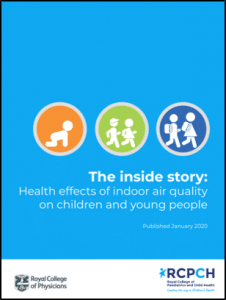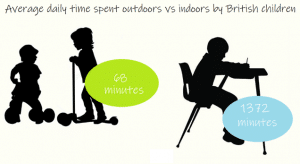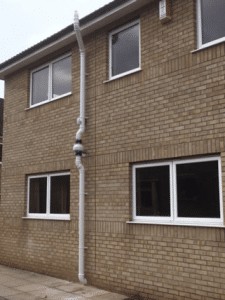 The Royal College of Paediatrics and Child Health (RCPCH) and Royal College of Physicians have recently issued a new report “The Inside Story: Health effects of indoor air quality on children and young people”.
The Royal College of Paediatrics and Child Health (RCPCH) and Royal College of Physicians have recently issued a new report “The Inside Story: Health effects of indoor air quality on children and young people”.
With children in the UK spending more and more of their lives indoors, medics are urging Government and local authorities to take action to prevent an epidemic of respiratory issues as a result of poor indoor air quality.
The report covers many different aspects of indoor air pollution, such as VOCs, mould and carbon monoxide. Radon is mentioned throughout the report as a specific, carcinogenic indoor air quality concern.
Children Spending Too Much Time Indoors
According to the report, children spend an average of just 68 minutes outside per day. That means they spend 1372 minutes indoors every day. Whilst some other forms of air pollution can be seen or smelt, thus alerting us to their presence there is no way of knowing whether children are being exposed to high levels of radon in a given building unless a radon test has been conducted.
A significant amount of the time that children are indoors is whilst they are at school, with primary children racking up around 635 hours in the classroom each year.
The report acknowledged that although there are strategies and regulations in place to prevent or limit exposure to certain pollutants, including radon, “these regulations are not always effective”. Legislation is in place that requires all employers, including schools, to carry out a radon risk assessment, yet many remain unaware of the requirement.
- The Management of Health & Safety at Work Regulations 1999 require the assessment of health & safety risks and this should include radon – all workplaces must complete a radon risk assessment
- If the workplace is located in an ‘affected area’ as designated by Public Health England, i.e. an area where it has been estimated more than 1% of properties will contain elevated levels of radon, you must then carry out radon testing to measure the risk
- Similarly, if the property has a basement or partly below-ground workspace, regardless of geographic location, that is occupied for an average of an hour per week or greater, testing must be carried out
- If the annual average radon level exceeds 300 Bq/m3 (for reference, the UK indoor average is 20 Bq/m3), the Ionising Radiations Regulations 2017 come into effect requiring you to restrict exposure (either by reducing the hazard or restricting access).
The latest report comes just weeks after the Building Engineering Services Association (BESA) urged government to introduce mandatory air quality checks as a part of OFSTED inspections.
How can PropertECO Reduce Radon Levels?
PropertECO work with local authorities, academy schools and independent schools across the country to assist with radon compliance. Our ‘place and collect’ test service ensures that an appropriate number of detectors are placed around the school, secured in a suitable location and collected after three months’ exposure before being analysed in the laboratory.
When elevated levels are detected, our expert surveyors are experienced in designing effective radon mitigation systems whilst overcoming the challenges of installing such equipment in a school environment.
Fans are placed at a high level out of reach of children (and footballs!) and works can be undertaken during weekends and school holidays.

Contact us today for a no obligation quotation for radon testing of your school, home or workplace or click here to download our Schools Radon Risk Assessment guidance pack.

